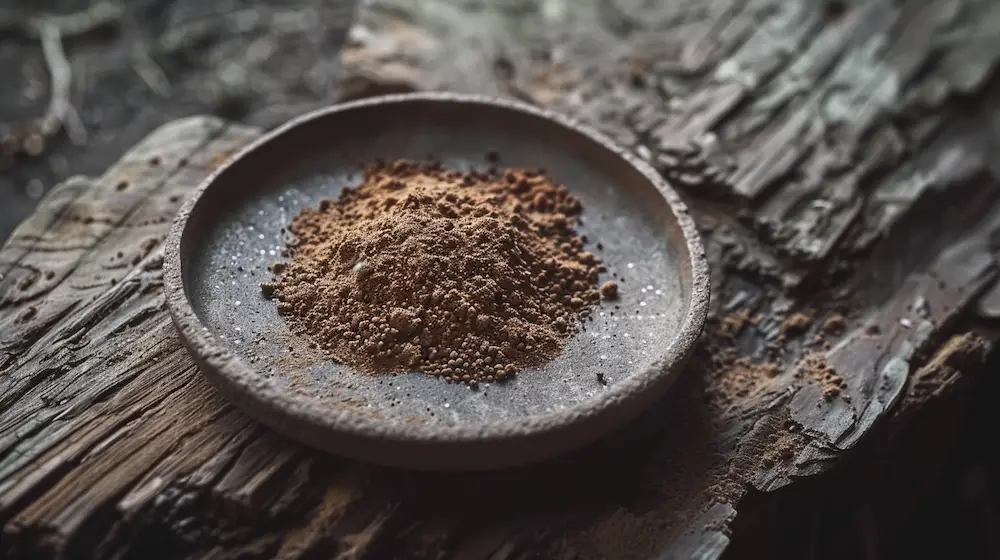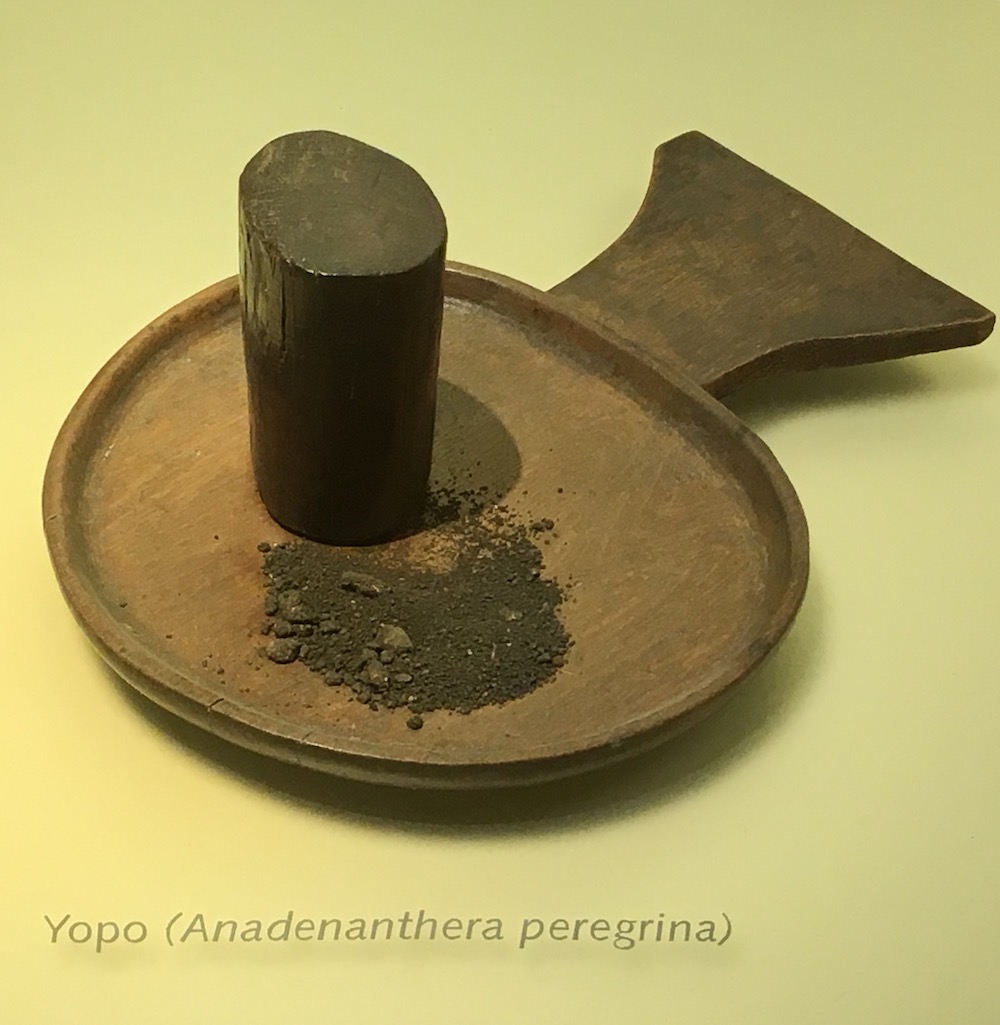Yopo Medicine

Table of Contents
What is yopo medicine?
Yopo, a lesser-known but profoundly impactful entheogen, has been used for centuries by indigenous tribes in South America for spiritual and medicinal purposes. Derived from the seeds of the Anadenanthera peregrina tree, this powerful substance offers unique psychoactive effects, making it a subject of curiosity and reverence. In this comprehensive guide, we will explore the multifaceted aspects of Yopo, from its traditional uses and preparation methods to its legal status and potential health implications.
Popularly known as Orinoco niopo, guayo colorado de Nueva Granda, yopo, cohoba, nopo, mopo, parica or tamarindo de teta, it is a perennial tree native to the Caribbean and South America.
The use of Yopo powder extends beyond mere recreational use; it is deeply integrated into the cultural and spiritual practices of the indigenous communities. In modern contexts, Yopo is also explored for its potential therapeutic benefits, particularly in treating mental health issues such as depression and anxiety.
Yopo is considered one of the strongest entheogens on earth, producing intense psychedelic experiences that can last up to 3 hours. The effects of yopo include body awareness, discomfort that invites cleansing through vomiting, and visions that have the purpose of misaligning the mechanisms that support the structure of thought. Yopo is also believed to support the process of discovering oneself, others, and life from the eyes of love.
How to Prepare Yopo
Step 1: Collecting and Heating the Seeds
- Begin by collecting Yopo seeds, which appear as shown early in the process.
- Heat the seeds in a pan until they start popping, resembling the behavior of Mexican jumping beans.
Step 2: Removing Seed Skins
- Once the seeds have popped and cooled slightly, peel away the outer skin to reveal the woody part inside. Remove all the red outer parts as they’re not needed.
Step 3: Preparing the Snail Shell
- Heat a large snail shell wrapped in aluminum foil near a flame for about an hour until it becomes thin and fragile.
- Crush the heated snail shell into a powder. Optionally, add a little baking soda to the powder, though this is not traditional. The recommended ratio is about 20% snail shell or baking soda by weight.
Step 4: Making the Yopo Paste
- In a mortar and pestle, mix the peeled seeds with the snail shell and baking soda powder. Grind them into a fine powder.
- Gradually add a bit of water to the powder to form a paste, aiming for a wet clay consistency.
- Knead the mixture until it’s uniform in color and texture.
Step 5: Drying and Finishing the Snuff
- Flatten the paste out and allow it to dry overnight.
- Once dry, re-grind the paste into a fine powder, which is your finished Yopo snuff.
Usage and Precautions
- Yopo can be insufflated (snorted) using a long pipe, traditionally made from bamboo.
- Start with a small amount to test the effects, as the potency can vary.
- Be prepared for strong psychoactive effects, and ensure you’re in a safe environment, potentially with supportive company.

Yopo benefits and effects
Yopo is revered for its various psychological and physical effects, including heightened awareness, vivid visual hallucinations, and deep introspective experiences. It is often used in spiritual ceremonies to facilitate profound personal insights and connections with the divine. This part of the blog will discuss the benefits reported by users and the scientific perspective on how Yopo affects the human brain.
Adjustment of the bodily mechanism: Yopo is suggested to help in adjusting the body’s mechanisms, which might include various internal shifts and movements that occur during the process.
Deep internal process: It facilitates a profound engagement with the mind and soul, suggesting a deep introspective journey.
Building trust and confidence: Yopo encourages a state of trust and confidence, important for fully embracing and experiencing the medicine’s effects.
Exploration of the inner world: The use of yopo leads to exploring one’s own inner world, uncovering forgotten or suppressed memories, and bringing them to consciousness.
Increased tranquility and relaxation: The experience is described as bringing more than just tranquility; it also offers relaxation and a peaceful state of mind.
Yopo Effects on the Brain
The effects of yopo on the brain are attributed to its powerful psychedelic compounds, including 5-MeO-DMT, bufotenin, bufotenin oxide, and DMT, which are found in the seeds of the Anadenanthera peregrina tree. These compounds interact with the brain to induce vivid hallucinations, altered perceptions of time and space, increased empathy, enhanced creativity, and potentially spiritual experiences. Users may also report communicating with higher beings, gaining wisdom, and experiencing profound insights into themselves and the world around them. The psychedelic effects of yopo can vary widely among individuals, leading to experiences ranging from inner peace and contentment to intense visual and sensory perceptions. The active ingredients in yopo, particularly bufotenin and 5-MeO-DMT, are known for their potent hallucinogenic properties, often likened to other powerful psychedelics like DMT.
Yopo Drug
Often labeled as a drug due to its psychoactive properties, Yopo challenges conventional classifications with its deep entheogenic use. This part will address common misconceptions, legal issues, and the cultural significance of Yopo, distinguishing it from recreational drugs and emphasizing its role in traditional medicine and spiritual healing.
Where Can You Buy Yopo?
Yopo can be found in various forms and from multiple sources, depending on the legal status in the country where one resides. It’s important to ensure that the purchase and use of Yopo comply with local laws, as its status can vary greatly from one region to another.
- Online Ethnobotanical Stores: Many online stores that specialize in ethnobotanical products offer Yopo seeds or powder. These stores typically provide products intended for ceremonial or educational use.
- Local Markets in South America: In regions where Yopo is traditionally used, such as parts of Venezuela, Colombia, and Brazil, it may be possible to purchase Yopo directly from local markets or indigenous communities.
- Spiritual and Healing Retreats: Some retreats that offer traditional healing ceremonies may also provide participants with Yopo as part of their programs. These retreats are often located in South America but can be found worldwide.

Is It Illegal to Bring Yopo to the United States?
The legal status of Yopo in the United States is complex, primarily because it contains DMT (Dimethyltryptamine), a substance classified under the Controlled Substances Act. However, the seeds themselves are not regulated:
- Seeds: Yopo seeds, which contain DMT, are legal to possess unless they are specifically intended for consumption.
- Processed Yopo: Any processed form of the seeds intended for use as a psychoactive substance is likely considered illegal under federal law.
- Regulation and Enforcement: Enforcement of these laws can vary, and possession of Yopo could potentially lead to legal issues, especially if there is evidence of intent to consume or distribute.
Before purchasing or transporting Yopo into the United States or any other country, it is advisable to consult legal counsel to understand the specific legal implications.
What are the Spiritual Benefits of Using Yopo?
The active compounds in Yopo, primarily DMT and bufotenin, have significant effects on both the brain and body:
- Neurological Effects: DMT acts on serotonin receptors in the brain, particularly the 5-HT2A receptor, which is known to play a key role in controlling cognition, perception, and mood.
- Physical Sensations: Upon administration, users may experience physical sensations such as tingling, increased heart rate, and changes in body temperature.
- Psychoactive Effects: The psychoactive effects include visual hallucinations, altered states of consciousness, and emotional introspection, which can last from several minutes to over an hour.
Understanding these effects is crucial for safe use, particularly in ceremonial contexts where physical and psychological readiness is emphasized.

What is the History and Origin of Yopo Use?
Yopo has a rich history and cultural heritage, particularly among indigenous tribes in the Orinoco Basin of South America:
- Historical Use: Archaeological evidence suggests that Yopo has been used for thousands of years, with artifacts such as snuff trays and inhalers found in regions that are now part of Venezuela and Brazil.
- Cultural Significance: For the indigenous tribes, Yopo was not just a medicine but a sacred tool for spiritual journeys and connecting with the natural world.
- Transmission of Knowledge: The knowledge of preparing and using Yopo has been passed down through generations, preserving the traditional methods and cultural practices associated with its use.
This deep historical and cultural connection adds to the reverence with which Yopo is treated in traditional ceremonies.
Can Yopo be Used for Therapy or Mental Health Treatment?
Emerging research suggests potential therapeutic uses of Yopo, particularly related to its psychoactive compounds:
- Mental Health: Preliminary studies indicate that substances like DMT could help treat conditions such as depression, anxiety, and PTSD by promoting significant psychological shifts and increased emotional openness.
- Integration into Modern Therapies: Some therapists are exploring the use of Yopo in controlled settings to facilitate deep therapeutic sessions, where users can confront and process emotional and psychological issues under professional supervision.
- Challenges and Considerations: The integration of Yopo into mainstream therapy faces challenges, including legal restrictions and the need for thorough scientific research to understand its efficacy and safety fully.
The potential of Yopo in modern therapy represents an exciting frontier in the overlap between traditional plant medicines and contemporary psychological treatment methodologies.
How Does Yopo Compare to Other Entheogens Like Ayahuasca?
Yopo and Ayahuasca are both powerful entheogens used in South American shamanic practices, but they have distinct differences:
- Active Compounds: Yopo contains DMT and bufotenin, which induce short but intense experiences. Ayahuasca, made from Banisteriopsis caapi and Psychotria viridis, produces longer, more narrative-driven journeys.
- Method of Administration: Yopo is typically snorted, while Ayahuasca is drunk as a brew.
- Cultural Contexts: While both are used in spiritual ceremonies, the specific rituals and traditions surrounding their use vary greatly by tribe and region.
Are There Any Health Risks or Side Effects of Using Yopo?
While Yopo is used for spiritual and healing purposes, it is not without risks:
- Physical Side Effects: These can include nausea, increased heart rate, intense dizziness, and headaches shortly after administration.
- Psychological Impact: The intense visions and emotional revelations can be overwhelming, particularly for those not prepared for or familiar with its effects.
- Long-Term Health Concerns: There is limited research on the long-term health effects of Yopo, though like any substance affecting neurotransmission, caution is advised.
Responsible use, ideally under the guidance of experienced practitioners, is crucial to minimize risks associated with Yopo.
Where Can I Find Authentic Yopo Ceremonies or Retreats?
Finding authentic Yopo ceremonies requires research and sometimes travel:
- South America: The best chance to participate in an authentic Yopo ceremony is in countries like Venezuela and Brazil, where indigenous tribes host ceremonies.
- Retreat Centers: Some retreat centers in South America offer Yopo ceremonies as part of their spiritual programs.
- Online Communities and Forums: Websites and forums related to ethnobotany and plant medicine can provide contacts and information about authentic Yopo experiences.
Citations:
[1] https://www.sirius.nl/en/encyclopedia/plants/yopo/
[2] https://www.drpaddo.com/en/blogs/news/what-is-yopo-and-what-are-its-effects/
[3] https://innershift.institute/yopo-2/
[4] https://www.ncbi.nlm.nih.gov/pmc/articles/PMC3181663/
[5] https://greatist.com/live/yopo